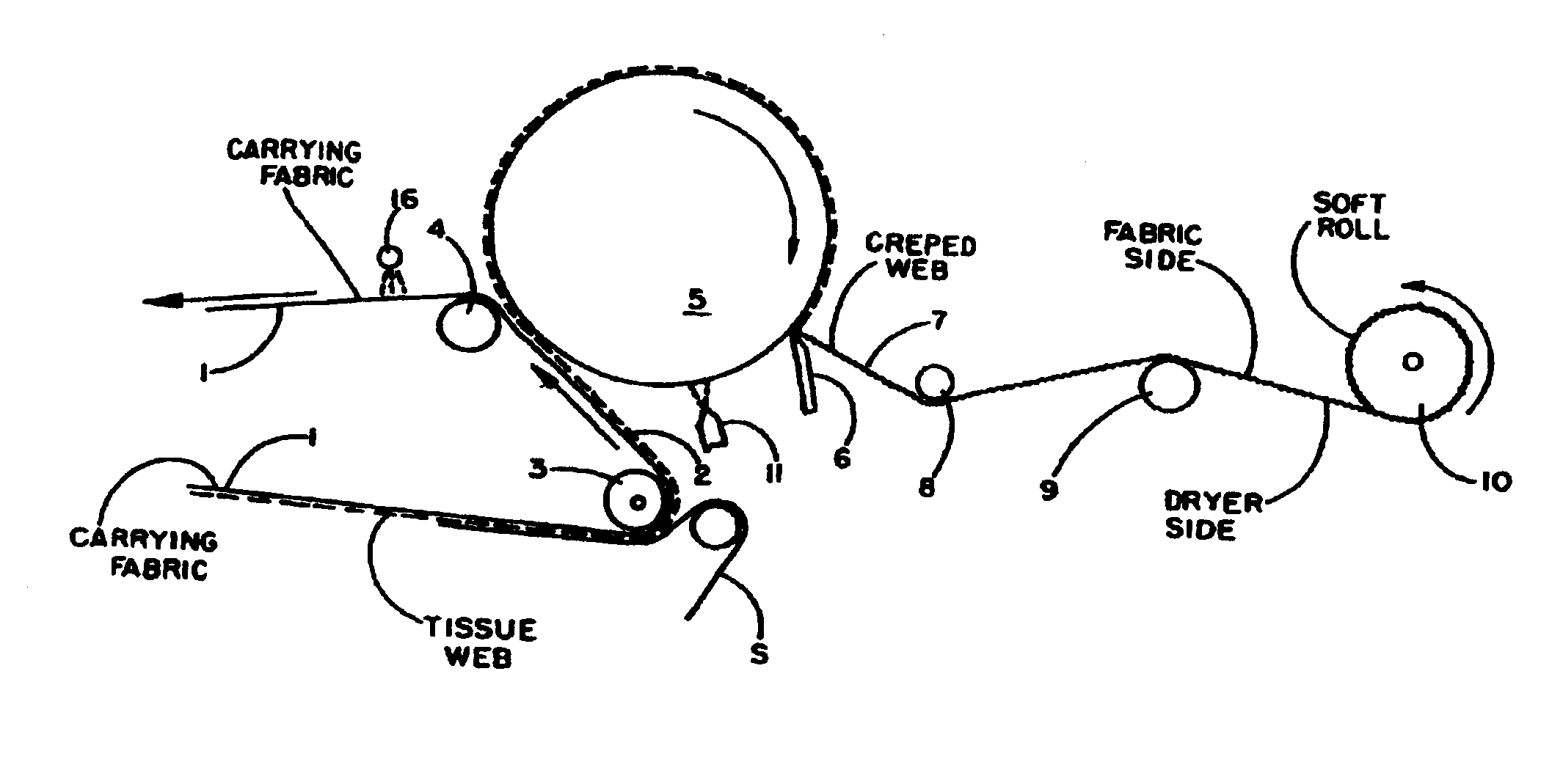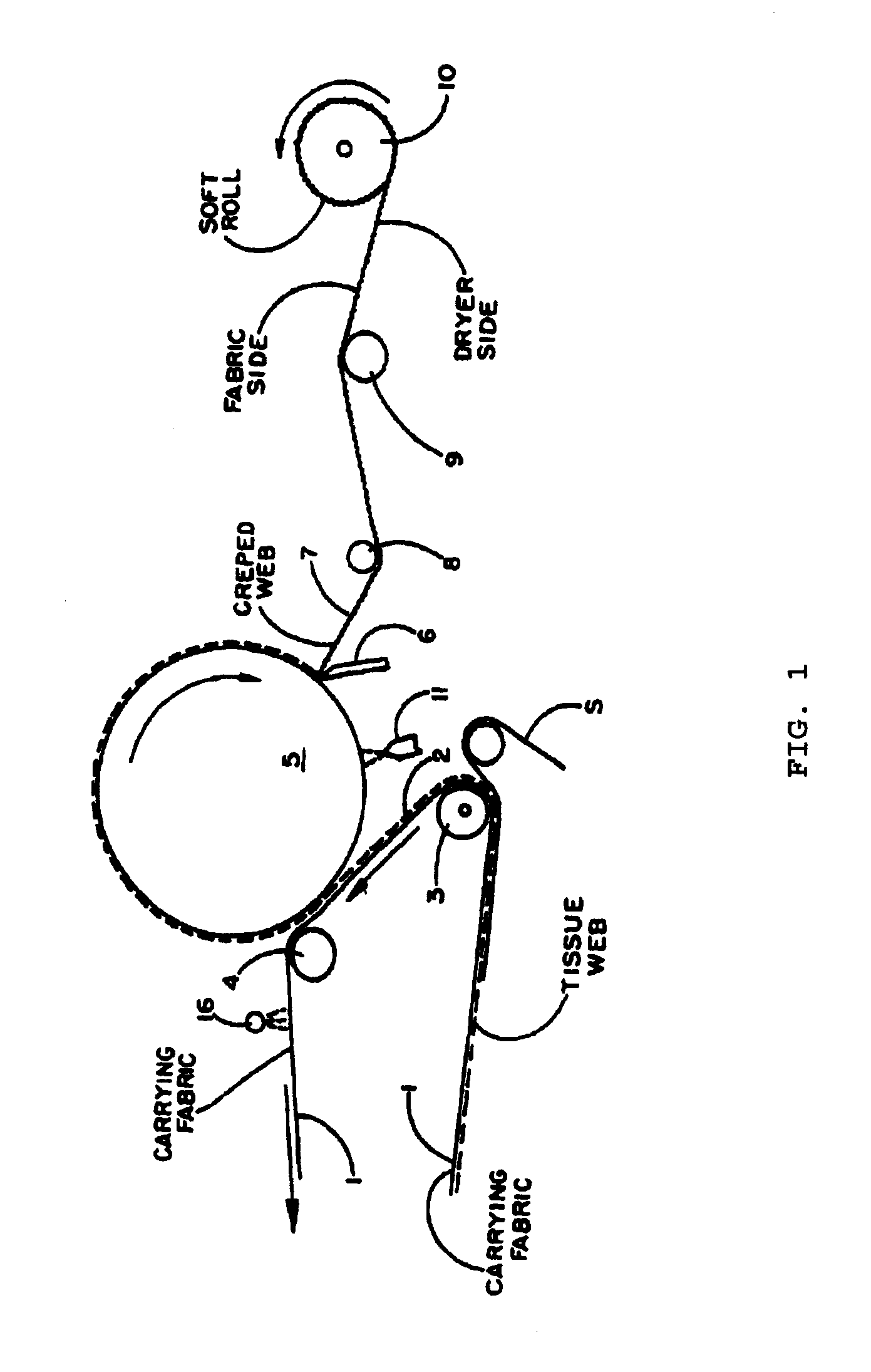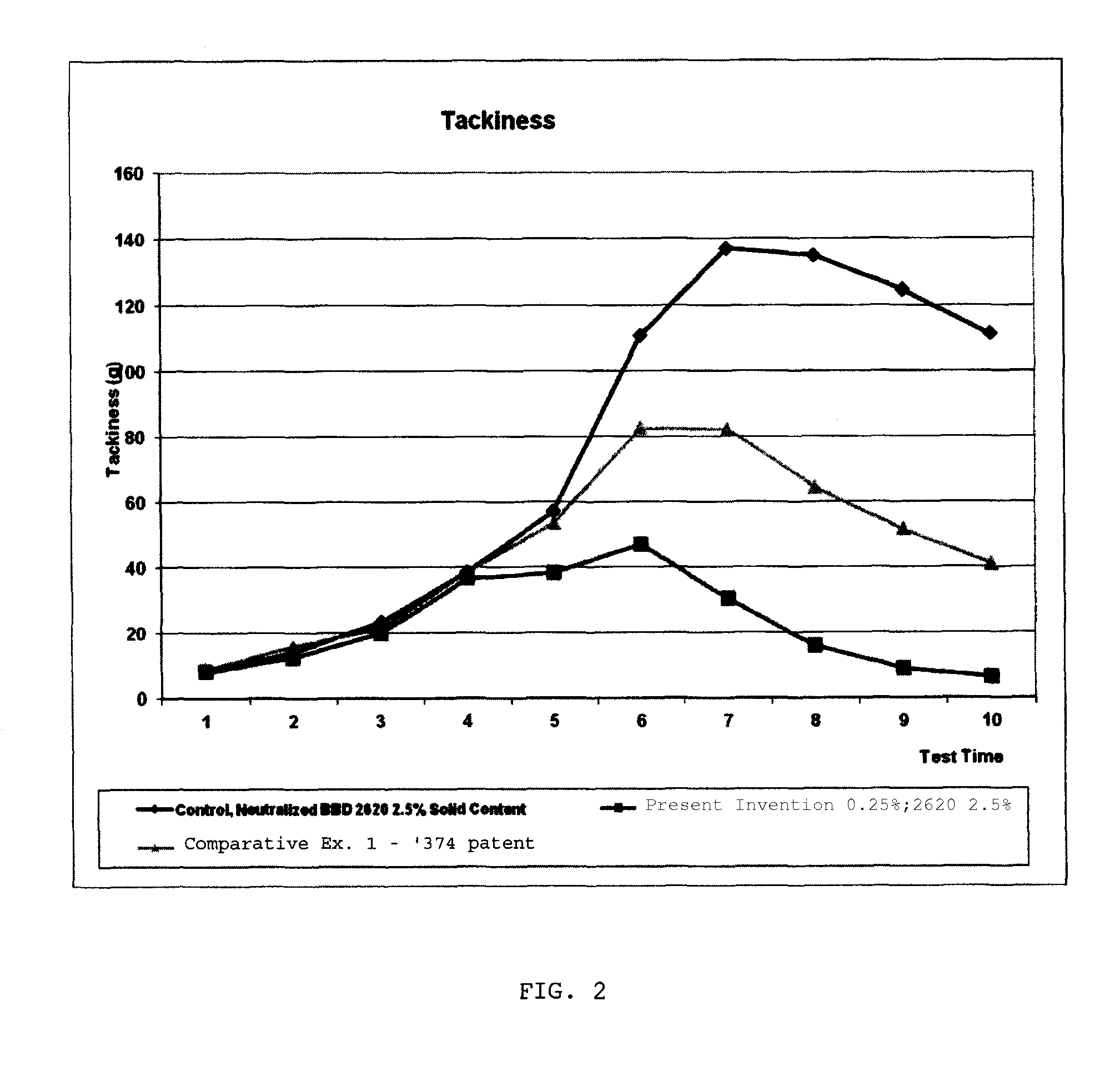Oil-Based Creping Release Aid Formulation
a technology of oil-based creping and release aid, which is applied in the field of formulations, can solve the problems of less effective formulation in providing desirable release characteristics
- Summary
- Abstract
- Description
- Claims
- Application Information
AI Technical Summary
Benefits of technology
Problems solved by technology
Method used
Image
Examples
example 1
[0056]In this example, a comparison was made between a formulation of the present invention and a formulation from U.S. Pat. No. 5,658,374. Specifically, Example 1 in the '374 patent was reproduced (to the extent possible), and this formulation was then used in a test to simulate release characteristics.
[0057]The oil-based formulation of the present invention was prepared by mixing the following ingredients together to form a blend.
ContentChemical(by weight)Lecithin HR20%Vegetable Oil (Canola Oil63%or Soybean Oil)C-40 (Castor Oil Ester with5%40 Moles of EO)Span 805%Tomadol 1-75%H2O2%Total100%
[0058]As a comparison, an oil-in-water emulsion was prepared by mixing the following components together:[0059]Water (66 wt %)[0060]Veegum—magnesium aluminum silicate (0.22 wt %)[0061]Propylene glycol (2.2 wt %)[0062]Toximul 8320—butoxy block copolymer of ethylene oxide and propylene oxide (1.1 wt %)[0063]Xanthan gum (0.11 wt %)[0064]Industrene 106—oleic acid (24 wt %)[0065]Centrophase HR—lecith...
example 2
[0071]The oil-based formulation of the present invention, as used in Example 1, was further compared to a crude oil-based formulation and to a control that contained no release formulation. The crude oil-based release formulation was a commercially-available product from Buckman, namely BUSPERSE 2032. This release formulation primarily contains light-weight crude oil and a surfactant, and is considered a very typical release agent used currently by the creping industry.
[0072]The same dilution rates and combination with an adhesive, as done in Example 1, was repeated here, except the release aid concentration was 0.1 wt % (instead of 0.25 wt %) and the test was conducted 12 times instead of 10 times. As can again be seen by the results shown in FIG. 3, the control adhesive which contained no release agent had the highest tackiness over time, and the adhesive / crude oil formulation had almost 50% more tackiness compared to the adhesive / release formulation of the present invention, agai...
example 3
[0073]A different oil-based formulation of the present invention was used in this example, and was prepared by mixing the following ingredients together to form a blend.
ContentChemical(by weight)Lecithin HR (soy lecithin)20%Vegetable Oil (Canola Oil68%or Soybean Oil)Safol 23 linear / isomeric1%alcoholPolysorbate 803%Tomadol 1-53%Tall Oil Fatty Acid2%Sorbitan monolaurate3%H2O0%Total100%
[0074]This formulation was further compared to a crude oil-based formulation and to a control that contained no release formulation. The crude oil-based release formulation was a commercially-available product from Buckman, namely BUSPERSE 2032. This release formulation primarily contains light-weight crude oil and a surfactant, and is considered a very typical release agent used currently by the creping industry.
[0075]The same dilution rates and combination with an adhesive, as done in Example 1, was repeated here, except the release aid concentration was 0.1 wt % (instead of 0.25 wt %) and the test was...
PUM
| Property | Measurement | Unit |
|---|---|---|
| Weight | aaaaa | aaaaa |
Abstract
Description
Claims
Application Information
 Login to View More
Login to View More - R&D
- Intellectual Property
- Life Sciences
- Materials
- Tech Scout
- Unparalleled Data Quality
- Higher Quality Content
- 60% Fewer Hallucinations
Browse by: Latest US Patents, China's latest patents, Technical Efficacy Thesaurus, Application Domain, Technology Topic, Popular Technical Reports.
© 2025 PatSnap. All rights reserved.Legal|Privacy policy|Modern Slavery Act Transparency Statement|Sitemap|About US| Contact US: help@patsnap.com



